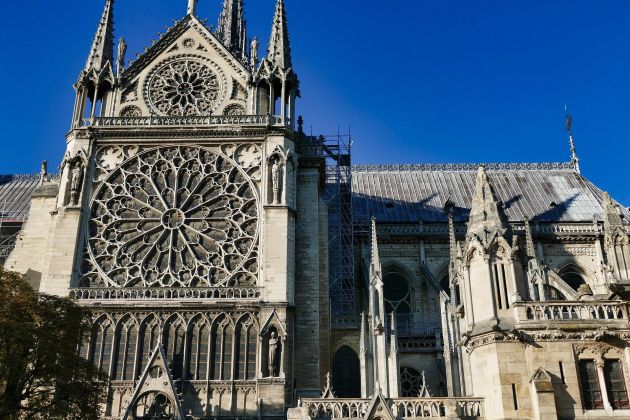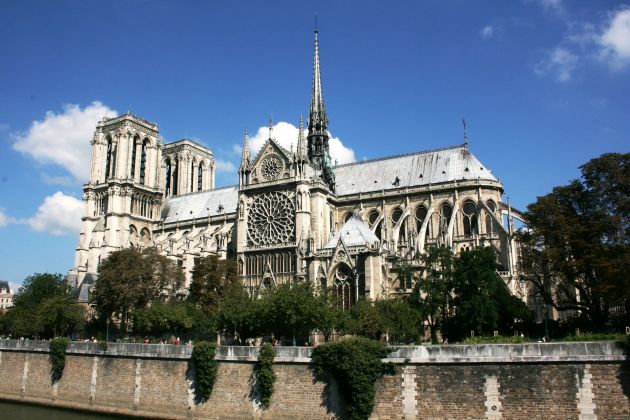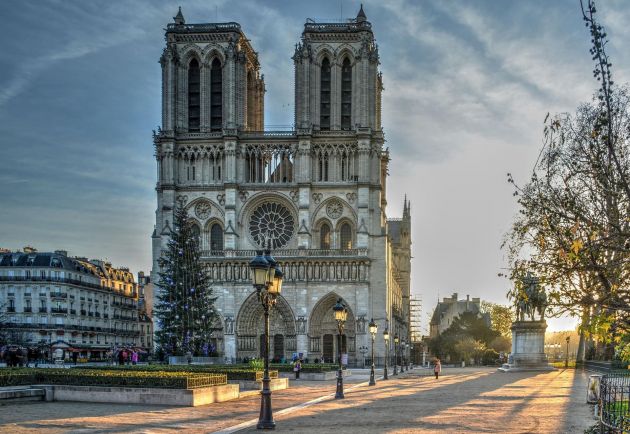
Notre-Dame is one of the most recognisable buildings in Paris and took over 200 years to build
Notre-Dame de Paris, also known as Notre-Dame Cathedral, is a vast Gothic-style cathedral in Paris. Amongst the most famous and visited architectural sites in the French city, it is also one of the most famous examples of gothic architecture in the world, known for its exemplary display of the movement’s features and for the extensive stained glass art that is included in the walls.
The cathedral sits at the eastern end of the Ile de la Cite, an island in the River Seine at Paris’ centre, and was built on the site of two other ruined churches that had previously been there. In 1160, Maurice de Sully, the bishop of Paris had the idea to turn the site into a single large cathedral. The foundation stone was laid by Pope Alexander III in 1163 and the high altar was consecrated in 1189. The process of building the cathedral took over 200 years.
Like many other Gothic buildings of the medieal period, Notre-Dame takes the form of the cross and consists of a choir and apse, short transept, nave, double aisle and square chapels. The original central spire was removed in the eighteenth century as it was unstable and a new spire was added during a large-scale restoration in the nineteenth century, led by Eugene Viollet-le-Duc.

Huge flying buttresses support the walls so efficiently that the walls themselves can house vast stained glass window art work instead of having to act as supports for the structure. The stained glass windows display scenes from the bible.
Two massive Gothic-style towers stand on the western facade, where the doors are adorned with Gothic carvings. These towers, each 68-metres tall, preside over a large square in front of the cathedral. The south door features scenes from the life of Saint Stephen and other local saints, while fearsome gargoyles adorn the building’s sides. At the eastern end of the cathedral the apse has large clerestory windows and is supported by flying buttresses. The enormous rose windows are the only windows to retain their original thirteenth century glass.
Throughout the years the cathedral has suffered much damage and undergone many reconstructions and repairs. It was also almost destroyed by Napoleon after the French Revolution. None of this previous damage came close to the devastating fire that ravished the cathedral in April 2019, however. The fire started in the attic and destroyed huge sections of the roof as well as Viollet-le-Duc’s nineteenth century spire and some of the ribbed vaulting.

After the fire, the French Prime Minister Edouard Phillipe announced an international competition to rebuild the spire.
Read more: This Notre-Dame proposal uses charred timber and translucent walls for a flexible prayer space
In July 2019 international architecture firm Gensler proposed creating a temporary place of worship in a lightweight pavilion that would be positioned in the square in front of the western facade. The pavilion would be made out of Ethylene Tetre Fluoro Ethylene fusions and a plastic membrane. Behind the altar, the west face of Notre-Dame would be visible to devotees.
In 1991 Notre-Dame was added to the UNESCO World Heritage list of culturally important sites, alongside only two other Gothic Cathedrals.
Read more: France kicks off Notre Dame competition to rebuild cathedral’s spire

















